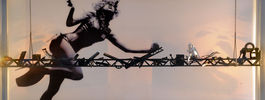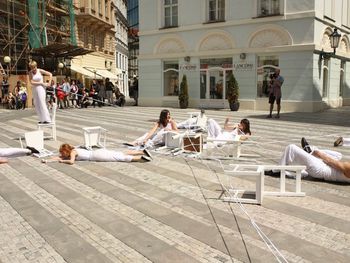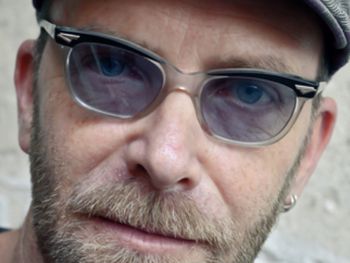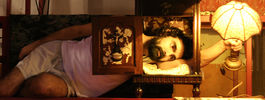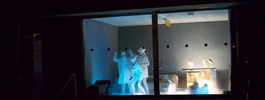

Performing Space or Ephemeral Section of Architecture
Scenography is the meeting of architecture and theatre. It amalgamates the contradictory moments of the inherently real of architecture and the inevitably fictitious of any theatre. At the same time architecture represents the most enduring of human manifestations, while theatre is bound to the ephemeral. Scenography as such does not exist; it is mere agency, a defined potentiality of relationships.
The architecture section of this PQ is called “performing space” and reflects the essential aspect of this dichotomy. It questions the ubiquitous ephemeral approach of contemporary architecture, which we can see erupt in many cities, where architectural creations, implants on the urban carpet, totally ignore their intrinsic quality of being constituents that give shape to our built surrounding as a continuous metamorphosis, beyond capitalist paradigms. Architecture is subject to a constant process of decay, to which it must relate. Architecture is the materialized world in which our lives unfold to the greatest degree. (The global increase of urban settlements further enhances this principle.) And we perceive this world with our senses; we are constantly subject to a holistic interweaving of visual information, sounds, haptic sensations and smells. In spite of all our efforts to reduce that complexity by creating artificial areas and spaces into which we can escape - if we think of the time we spend in digital media-based worlds - our bodies are made to perceive our surrounding with our senses. Materiality, the touch of felt, the raw and vivid appearance of oxidized steel, the soundscape in a hall of concrete and the smell of humid pine, is the language of architecture and how these materials change in regard to daylight, the weather condition and daily use. “Performing Space and the Ephemeral Section of Architecture” refocuses on those qualities.
Contemporary theatre is increasingly succumbing to the idea of success, measured purely by the number of tickets sold, as if any cultural avant-garde has emerged through broad popularity. This is not a naïve, romantic remembering of post-Cold-War times of abundance: the integrity of the arts is fundamentally in question. Entrepreneurship and the arts have, for quite some time now, discovered and entered into relationships in manifold ways. But theatre is an enormously fragile membrane, vibrating in tune to society’s impulses and convictions. Since theatre does not exist without an audience, theatre is the art form which is most interwoven into society. Commercial requirements for theatre as a membrane reverberating through society have resulted in it drifting away into mere market strategies. Theatre must maintain and unfold its ability to transcend the temporal occupation of public space beyond the real.
The focus on the theatricality of the public urban space aims at both vital factors described above. Rather than going with the flow of finding the latest, cutting-edge architectural statements, the Performing Space or the Ephemeral Section of Architecture aims to redirect our focus on what is already there and explore its contexts. Sharpening our awareness accordingly is not only profoundly contemporary, but, by establishing a field of tension between that which exists and a newly created situation in flux, also substantial.
The Performing Space or the Ephemeral Section of Architecture investigates international projects in the intertwinement between theatre and architecture and invites them to Prague as partners of a dialogue with the city’s history and situation today. The aim is to reflect on the multiple layers of the city of Prague, its history and complex identity. The PQ represents an enormous and unique meeting of theatre creators, artists, architects and other professionals from all over the world, who gather at one distinct place: the potential of sharing thoughts, works, constructions and dreams with each other. But this vibrant exchange takes place at a specific location with its own identity constituted through architecture - enduring and ephemeral -, and the theatricality of the urban space. We inquire as to how the exchange of thoughts unfolds within that identity.
We welcome you to join this exploration of theatrical manifestations in ephemeral architecture through live discussions, lectures, and walks through the city!
Exhibiting Countries and Regions
